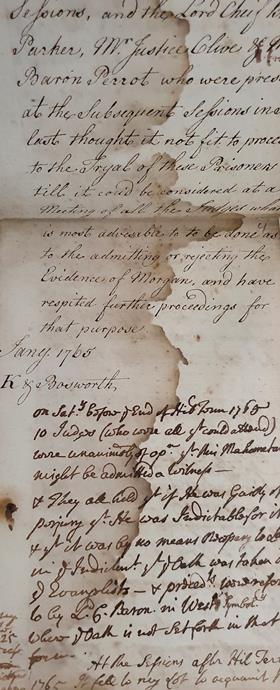One of the unsung glories of our common law tradition is the law report, volumes of which provide the backdrop to many a judicial portrait. They have been around for a surprisingly long time, Obiter learns on a flying visit to a new exhibition at Middle Temple Library. Regular reporting began in 1189 with the transcription of plea rolls into year books. ‘Though regular is rather misleading as the year books do have some irregularity in their printing.’
Of course, well into the Tudor period they were written in Anglo-Norman French – English did not become the language of courts documentation until the mid-18th century.
They began to take their modern shape with Sir James Dyer’s volumes of cases from 1512 to his death in 1582. The ‘nouel cases.. collectes per le iades tresreuerend iudge, mounsieur Iasques Dyer’, set the standard for what law reporting should look like.

The exhibition, The Evolution of the Law Report, open until April, takes us from the handwritten plea roll (pictured) to the age of artificial intelligence. ‘Its pitfalls are well documented, especially in regards to hallucinated information, but surely the advantages of AI in the legal world are also on the horizon,’ the commentary observes.
Make up your own mind. You don’t even need to call by in person: the fascinating exhibition is available for anyone to view online.































No comments yet